Discover phenomenal paper daisies this spring
One of the largest paper daisy displays in eastern Australia is in flower at the Australian Botanic Garden Mount Annan.
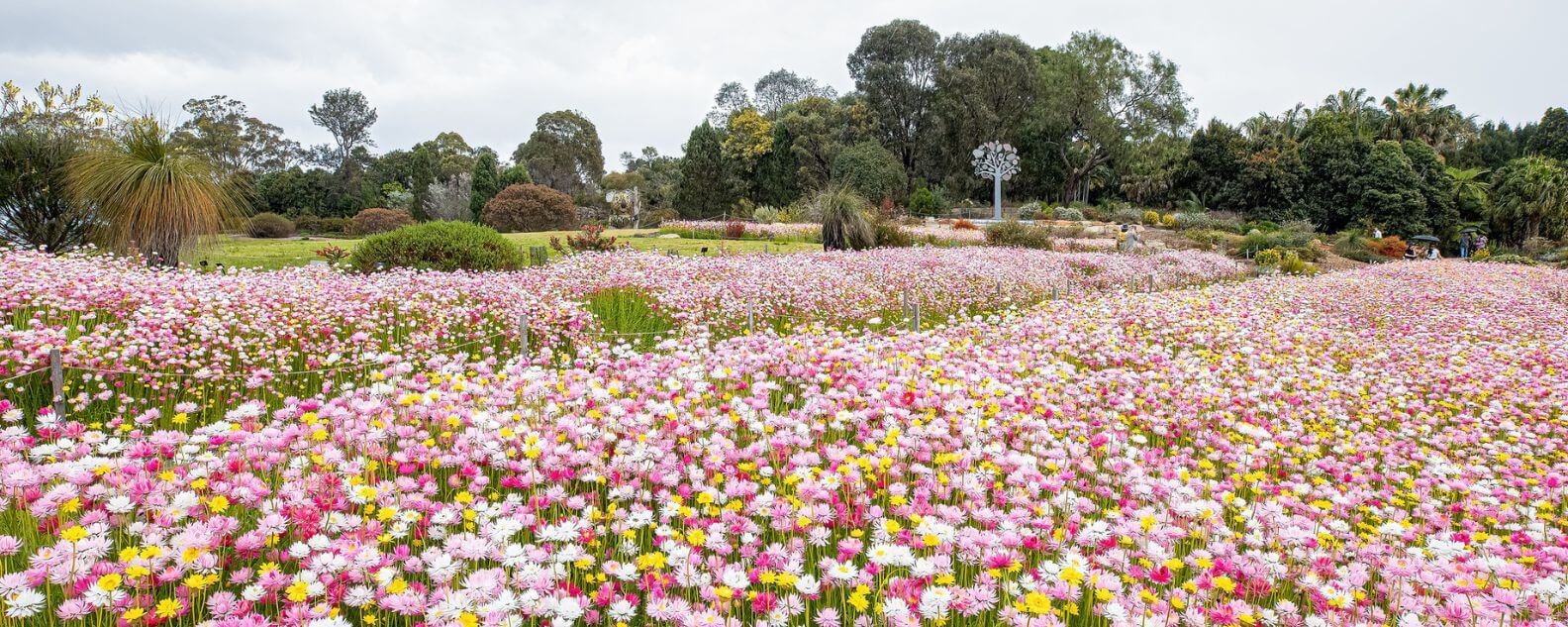
Through September and early October, magnificent species of paper daisies including Rhodanthe and Schoenia, will colour the Connections Garden in a sea of pink.
These vibrant species are native to Western Australia and the Australian Botanic Garden Mount Annan is one of the few places visitors can enjoy an exhibit of these flowers on this scale in the east coast.
Origin of the paper daises
The native paper daisy display at the Garden was first created in 1995, after the Horticulture team were inspired following a trip to Western Australia.
It’s now a long-held tradition by the team who see the transformation of the Connections Garden into a carnival of colour every spring.
“It’s been an incredible experience to see the display develop in our living collection over the past 29 years,” says Grant Burrell, Senior Horticulturalist at the Australian Botanic Garden Mount Annan.
“Due to a drier autumn and winter season from previous years, the humidity was lower and provided better conditions for germination and plant development this year,” he says.
The display attracts people from across the state and has become a coveted photo opportunity. The blush-pink curtain of flowers covers over 2,000 metres squared - the size of 1.6 Olympic swimming pools!
The creation of the popular paper daisy horticultural display.
Planting and protecting paper daisies
Paper daisies are best grown when following the natural growth cycle, which starts with direct sowing in autumn as the soil cools down.
The talented horticulture team starts preparation on the soil from late April and then begin sowing the Rhodanthe and Schoenia seeds in early May.
Large nets are then placed over the garden beds to ensure the younger seedling plants are protected from birds and other local wildlife. Ducks are known to eat the seeds during the early growth stages.
When the nets are removed in late August to early September, you can expect to see the flowers flourishing, shooting up to half a metre tall!
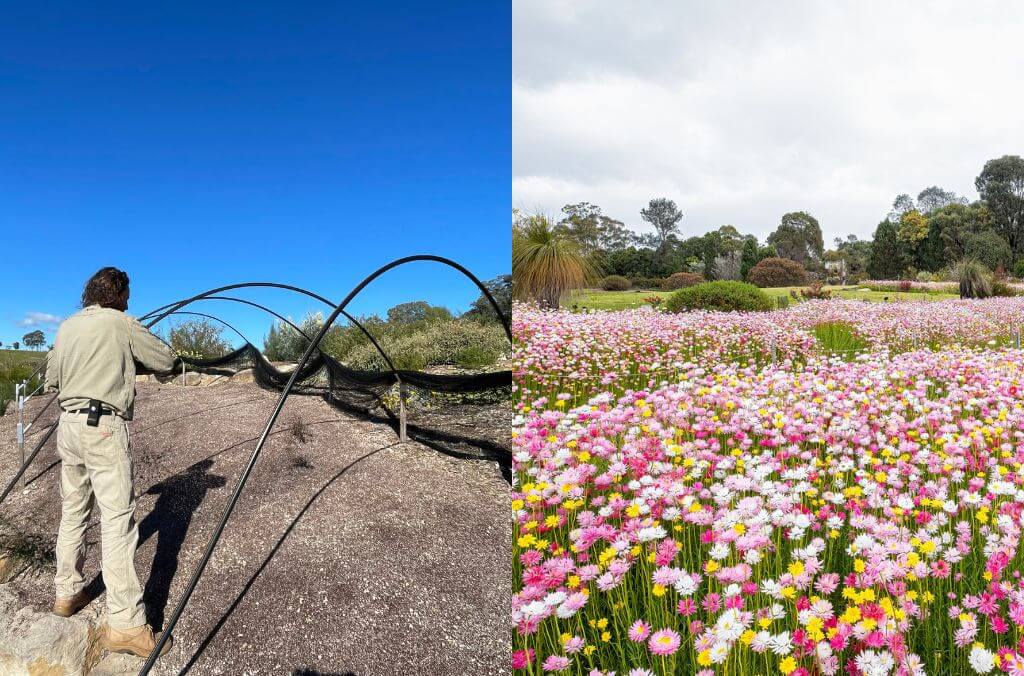
Paper daisy display in April during planting (left) and when it's in full bloom in September (right).
Did you know?
The Rhodanthe and Schoenia paper daisy species are “daylight activated.” This means the petals have a special adaptation to conserve energy: The daisy will only open its flowers when it receives a certain amount of sunlight.
After the peak flowering period finishes, the horticulture team will remove the flowers around early to mid-October, using them to mulch other areas of the Garden or put them into compost.
To learn more about how to grow your own paper daises at home, you can explore the Gardening at Home section and purchase your very own baby paper daisy plants at the Growing Friends Plant Sales.
Plan your paper daisy visit
Experience this special display with an expert guide on a Connections Garden Tour. Tours run every Friday during spring and autumn from the Visitor Centre.
Don't forget to purchase some plants from the Growing Friend Plant Sales at Mount Annan and enjoy a delicious meal and coffee from The Gardens Cafe.
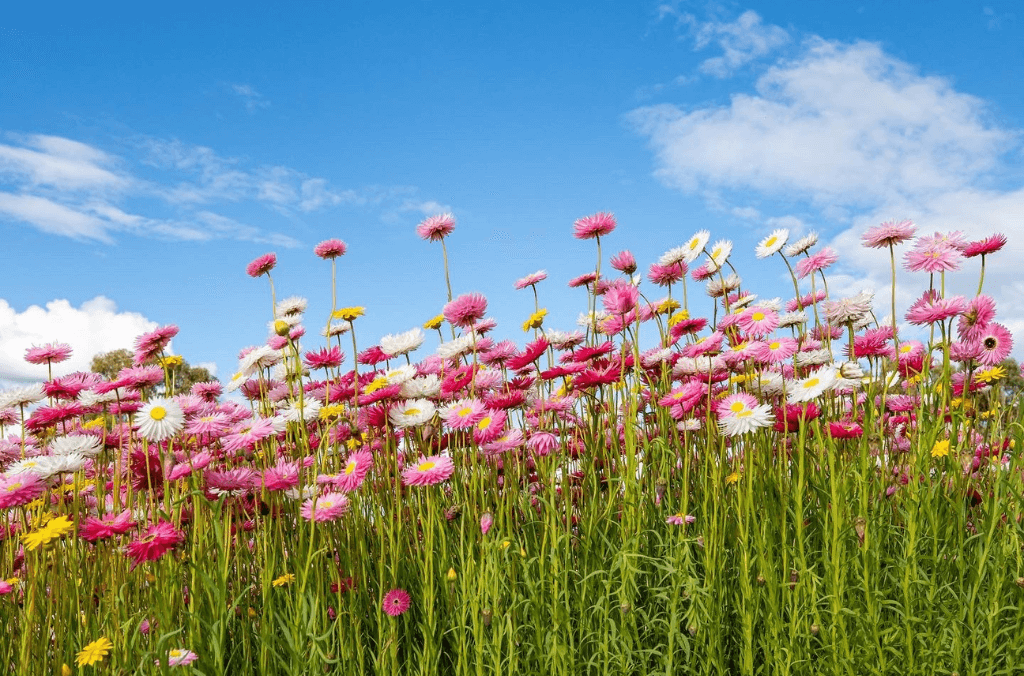
Grow your very own paper daisies at home.
Share your images and tag @BotanicSydney
The paper daisy display is best seen from September, when spring is in full swing at the flowerbeds around the Connections Garden. Share your images with us on social media and tag @BotanicSydney.
Related stories
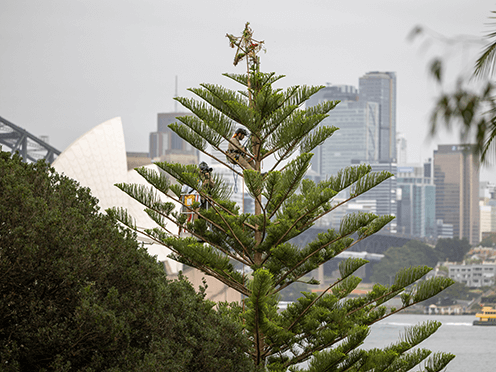
Discover the Royal Botanic Garden Sydney's very own "Christmas trees" - a festive trio of pretty pines from a lineage stretching all the way back to the time of the dinosaurs.
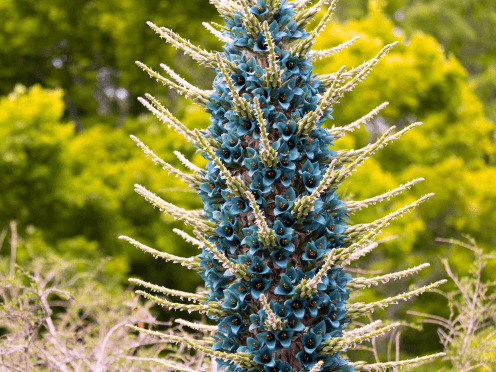
An extraordinary display of rare turquoise blooms are starting to flower at the Blue Mountains Botanic Garden Mount Tomah, with one species blooming for the first time ever.
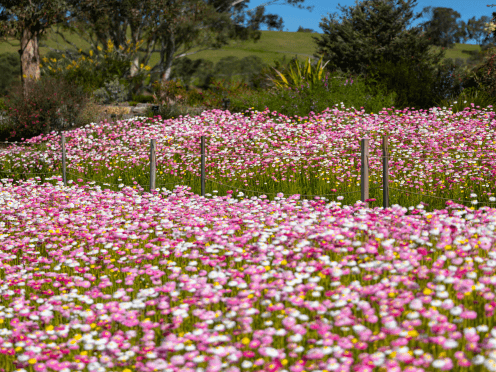
One of the largest paper daisy displays in eastern Australia is in flower at the Australian Botanic Garden Mount Annan.